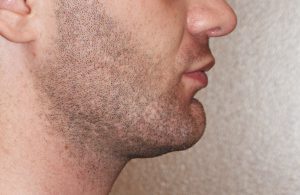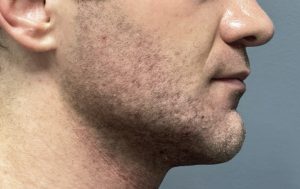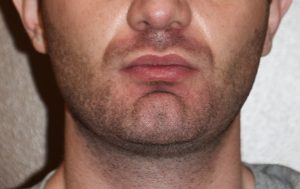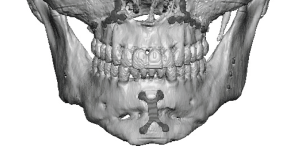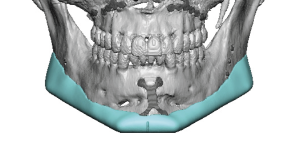Background: When one thinks of a short chin it is almost always perceived to be a horizontal issue. (lack of projection) And while that is by far the most common deficient chin dimension it is not the only one. Chins can also be vertically short or not long enough in height. And while many horizontal chin deficiencies have some vertical shortness as well I am not referring to this type of vertical chin deficiency. Rather I am speaking about a pure vertical chin deficiency, it has adequate forward projection but is short only in height.
In the treatment of the isolated vertically short chin the options are either an opening wedge bony genioplasty (with interpositional graft) or a custom chin implant. The main differentiator between the two options is how much vertical chin length is needed/desired. If 7mms or less is needed a custom chin implant works well but, any amount greater particularly double digits in length, requires a bony lengthening genioplasty.
While a body procedure can be used for the chin the autologous options for vertical jaw lengthening are limited. The chin wing procedure does lengthen the chin and some of the jawline by bone movement it does not provide any improvement for the entire jawline back to and including the jaw angles. (that is why it is called a chin wing or extended chin lengthening or lengthens two-thirds of the jawline but not the angles)
For total jawline augmentation only a custom jawline implant is effective. Depending upon the amount of chin lengthening needed it can also be done in isolation (less than 7mm vertical chin lengthening needed) or combined with a bony genioplasty if the chin lengthening needed is 8mms or more. The two procedures can be done together or they can be staged.


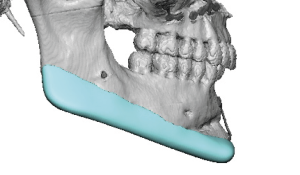
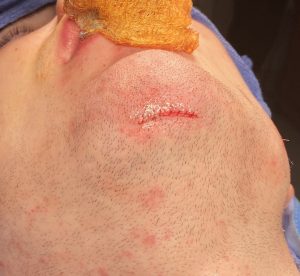
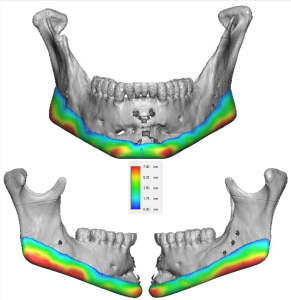
Key Points:
1) A vertically short lower jaw can only be partially corrected by bone expansion.
2) Beyond the chin vertical lengthening of the jawline requires an implant.
3) A custom jawline implant can be fitted over and around a prior vertical bony chin lengthening.
Dr. Barry Eppley
World-Renowned Plastic Surgeon




